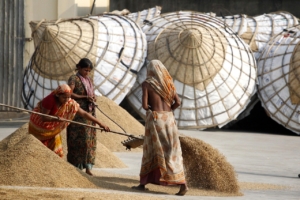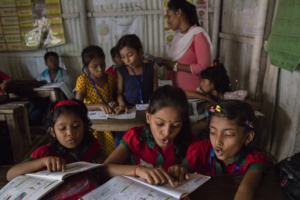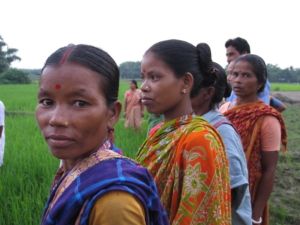 Millions of Bangladeshi citizens live in abject poverty. As of 2022, the overall poverty rate was approximately 19%. However, the country has made significant improvements in decreasing poverty over the past few decades, mainly due to the country’s Social Safety Net Programs (SSNPs).
Millions of Bangladeshi citizens live in abject poverty. As of 2022, the overall poverty rate was approximately 19%. However, the country has made significant improvements in decreasing poverty over the past few decades, mainly due to the country’s Social Safety Net Programs (SSNPs).
The nation has implemented these initiatives to help low-income Bangladeshis and give vulnerable communities long-term economic stability. With programs that provide food assistance, cash transfers and skills development, Bangladesh’s SSNPs aim to create a pathway for success for many struggling citizens.
The Vulnerable Group Development Program
One of the most impactful initiatives, the Vulnerable Group Development (VGD) program, primarily helps women suffering extreme food insecurity. Due to gender disparities in the country, women often suffer the most when it comes to poverty and hunger. Originally started as the Vulnerable Group Feeding (VGF) program in 1975, it changed to the VGD in 1982, shifting priorities from emergency relief to long-term development. The program distributes nutritious food over a specific period.
However, the program goes beyond that. Through a partnership with BRAC, Bangladesh’s largest nongovernmental organization (NGO), it educates individuals in basic reading, writing and nutrition skills, giving people the tools to lead a healthier and more successful life. By providing both food and education, the program helps vulnerable women break the vicious cycle of poverty as opposed to short-term help.
The Old Age Allowance Program
As the country is experiencing an aging population, the government has acted on the need to protect older citizens, with many lacking retirement savings. Before the program started in 1998, only retired government workers had pensions. The Old Age Allowance provides essential monthly cash transfers of BDT 500 (about $4) to older people.
The program helps nearly four million elderly citizens afford basic human necessities such as food, medicine and shelter, improving their quality of life and fighting poverty in Bangladesh. The program’s financial assistance also eases the burden on young family members who might be struggling financially to support them.
Income Generating for Vulnerable Group Development
The Income Generating for Vulnerable Group Development (IGVGD) program is another initiative that builds on the VGD program. The government designed IGVGD as a two-step poverty-reduction model. It helps low-income women develop from needing food aid through the VGD program to becoming self-sufficient workers earning a stable income.
Women in the program learn essential job skills, such as poultry farming and tailoring, which are crucial for future success. They may also receive small loans or grants to help them start their own businesses. Encouraging self-reliance and assisting women to secure employment empowers them to impact society and contribute to a growing economy. Over time, these efforts give women more control over their lives and strengthen the economy of local communities.
The Impact of the Social Safety Initiatives
These social safety initiatives have proven successful in fighting poverty in Bangladesh. There has been a major national decline in poverty rates in the past two decades. Poverty fell significantly between 2010 and 2016; in urban areas, it declined from 21.3% to 18.9%, while in rural areas it declined from 35.2% to 26.4%. Additionally, helping women develop vocational skills shows the program’s commitment to women’s empowerment in a country that historically offered them limited opportunities.
Recently, the government has decided to expand its social safety initiatives. It is working toward using technology to improve targeting mechanisms. Many international development organizations, such as the World Bank and the United Nations (U.N.), have also supported Bangladesh’s effort to improve the country’s SSNPs.
Final Remarks
Overall, Bangladesh’s Social Safety Net Programs show how time and investment in often overlooked groups of people can have a tremendous impact in reducing long-term poverty. It shows the effectiveness of targeted intervention in reducing poverty and creating long-term economic stability. By supporting at-risk groups, such as women and older people, with food assistance, cash transfers and vocational training skills development, the programs address major societal problems while creating a path for long-term success.
– Rafe Photopoulos
Rafe is based in Gainesville, FL, USA and focuses on Good News for The Borgen Project.
Photo: Pixabay

 The Sustainable Agriculture Foundation provides agricultural support to smallholder farmers in developing nations to mitigate
The Sustainable Agriculture Foundation provides agricultural support to smallholder farmers in developing nations to mitigate 
 endPoverty is a charity that strives to alleviate poverty through
endPoverty is a charity that strives to alleviate poverty through  Generational poverty persists within families across the world.
Generational poverty persists within families across the world. 



 GMB Akash is a Bangladeshi photojournalist. He launched his career with a profound goal: to spotlight the resilience and hardships of marginalized communities through his
GMB Akash is a Bangladeshi photojournalist. He launched his career with a profound goal: to spotlight the resilience and hardships of marginalized communities through his